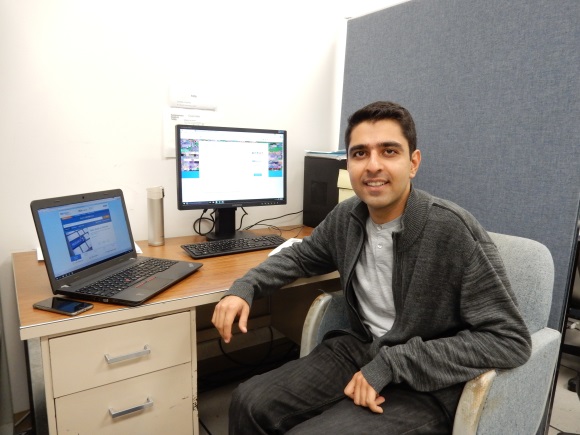 Kartik Ahuja, an electrical engineering PhD student working with Professor Mihaela van der Schaar, recently published his research on managing interference in small-cell networks in the journal IEEE Transactions on Wireless Communications. This work was highlighted in an article on expansion of 5G networks on IEEExplore and IEEE-spotlight.
Kartik Ahuja, an electrical engineering PhD student working with Professor Mihaela van der Schaar, recently published his research on managing interference in small-cell networks in the journal IEEE Transactions on Wireless Communications. This work was highlighted in an article on expansion of 5G networks on IEEExplore and IEEE-spotlight.
Ahuja believes small-cells, like the femtocell, are an important device that will become more and more popular in the next-generation wireless networks because of an exploding demand for data.
Femtocells, small base stations that transmits cell phone signal, act just like a cell phone towers, but they provide service for a much smaller area. They are designed to be used in a home or an office in order to enhance the area’s cell phone signal or to extend coverage in areas with poor coverage.
In his research, Ahuja sought to make these devices more effective by minimizing the cell phone interference created by the use of multiple femtocells in one area.
In areas with poor cell phone signal, multiple people will likely purchase femtocells in order to get better service. If there are a number of femtocells concentrated in one area and the devices send signal simultaneously, phones will pick up multiple signals at once, thereby experiencing interference.
Sending signals at different times is one of the standard methods for eliminating interference. If a femtocell sends a signal a fraction of a second after another base station, there will be no interference. One of this method’s downsides is that each base station must wait for its turn to transmit its signal causing download delays for cell phone users, especially when there are many femtocell users in an area.
Ahuja’s approach to eliminating interference is to divide femtocells into subsets based on their location. He then has each base station in a subset transmit its signals sequentially. Using Ahuja’s method, only the femtocells that are close enough to interfere with each other transmit at different times.
Ahuja used optimization theory and graph theory to create the algorithm that determines how the femtocells divide into subsets and the order in which these subsets are scheduled to transmit. His algorithm caused significant improvements in the rate at which femtocells sent data to phones when in an area with other femtocells. The speed improved by between 100% and 130% percent.
Ahuja also published a work in IEEE Journal on Selected Areas in Comunications about an algorithm his team developed allowing a group of femtocells with no central base station guiding them to distribute between themselves these decisions about forming subsets and their sequential sending of signals.
Of his research in Electrical Engineering, Ahuja said, “I’ve been interested in problems where applications and mathematics intersect.”
